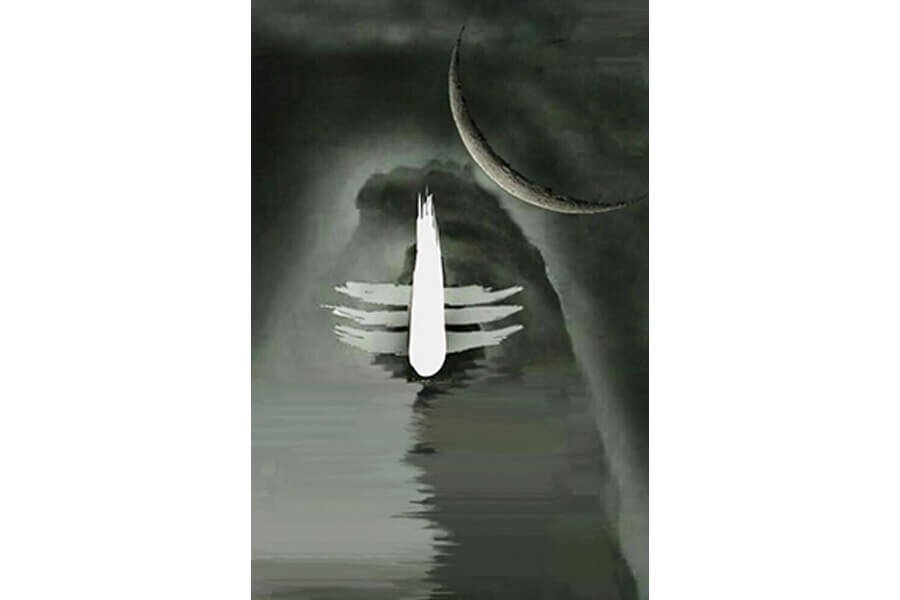The Metaphor of Deepavali
Deepavali, or Diwali as commonly known, will be celebrated on the 12th of November this year. What is the inner, or spiritual, significance of Diwali in Sanatan Dharma? An excerpt from Partho's latest book.

Who is Shiva? Is he a puranic god, member of the trinity, who destroys even as Brahma creates and Vishnu preserves? Or is he the first yogi, who sat on top of Kailasa, smeared with ash, snakes round his neck, hair matted, lost in the reveries of dhatura and bhaang? Or is he the lingam seen in ubiquitous temples in India with a yoni reflective of some pagan symbolism?
To my understanding, Shiva is our highest possibility. Hinduism has always maintained that not only is it possible to experience and live the Divine, Divinity is our inherent nature. That Shiva is pure consciousness, without any attributes, other than absolute stillness upholding intensest activity, the ineffable, the formless and the all-pervasive.
In one definition, Shiva means nothing. This is a beautiful understanding. For the God who has no attributes, who is beyond thoughts and concepts, is everything because nothing. Similar to the Shoonya of the Buddha, Shiva is thus timeless, spaceless and causeless and is the origin and summit of the Universe. Hinduism teaches us that he is also the origin and summit of each of us, individually, and that it behooves us to discover our highest potential and be it, manifest it and become its living expression.
Hinduism also explains that there are various levels of manifestation, starting from the grossest to the subtlest to the causal. And Shiva is represented in various ways by various adorers. But, eventually, Shiva is an experience and a reality, a revelation and the Truth of existence.
How shall we reach him? He has taught us countless ways, including Sankhya and Vedanta, Buddhism and yoga, bhakti and advaita. But, above all, to understand that he is beyond any quality we try to describe him with is an auspicious beginning. And Shiva also means an auspicious start.
The two beeja sounds of Shiva are Shi and Va according to the Shiv Rahasya. Shi means stillness and that in whom all things rest. Va implies movement and creation. He is the nothing from whom the Universe springs.
He is the utmost and the untainted in us. He is hidden, though clearly visible to the loving eye. He is that without whom this cosmos may exist not even for a moment. The stillness of the mind in dhyana. The quiet love in our hearts without desire. The greatest teachers such as the Buddha, Sankaracharya and Vivekanada are his emanations. All we need to do is peel the blinds of our eyes and he is everywhere and everything.
Hinduism exalts the formless and the transcendent. But it does not reject form and the immanent. For what is form if not a manifestation of the formless? What is that which is clear and vast as the sky but is also not the minutest and smallest grain? It is he who I am. And just this realization is enough to tear off all the veils of ignorance from the eyes of the seeker.
One of the highest realizations of Vedanta is Shivoham, that Shiva am I. It is only appropriate that he who is nothing, is also the dance of the cosmos as Nataraja, and the fourth state of awareness beyond waking, sleep and dream, known as turiya. And his oneness with Shakti gives us one of the profoundest symbols of male and female complementarity in the ardha-nareeshvara.
And it is fitting too that Sankaracharya’s famous Nirvana Shatkam ends with this stanza, “Aham nirvikalpo nirakar roopo … Chidananda roopah Shivoham Shivoham.” Free of duality, form of the formless … The form of consciousness and bliss, that Shiva am I, that Shiva am I.
Author, poet, philosopher and medical practitioner based in Florida, USA. Pariksith Singh has been deeply engaged, spiritually and intellectually, with Sri Aurobindo and his Yoga for almost all his adult life, and is the author of 'Sri Aurobindo and the Literary Renaissance of India', 'Sri Aurobindo and Philosophy', and 'The Veda Made Simple'.
Deepavali, or Diwali as commonly known, will be celebrated on the 12th of November this year. What is the inner, or spiritual, significance of Diwali in Sanatan Dharma? An excerpt from Partho's latest book.
The first of a four part series on Vedanta from Swami Vivekananda’s famous ‘Calcutta address on Vedanta’ delivered in Calcutta on January 19, 1897. This talk marks a significant moment in Swamiji’s life and is considered one of his most important speeches on Vedanta, where he explains some significant aspects of Sanatan Dharma
A series of conversations on Sanatan Dharma and Vedanta between our editors, Dr Singh and Partho. This is the first conversation in the series, describing the initial process of Vedanta

